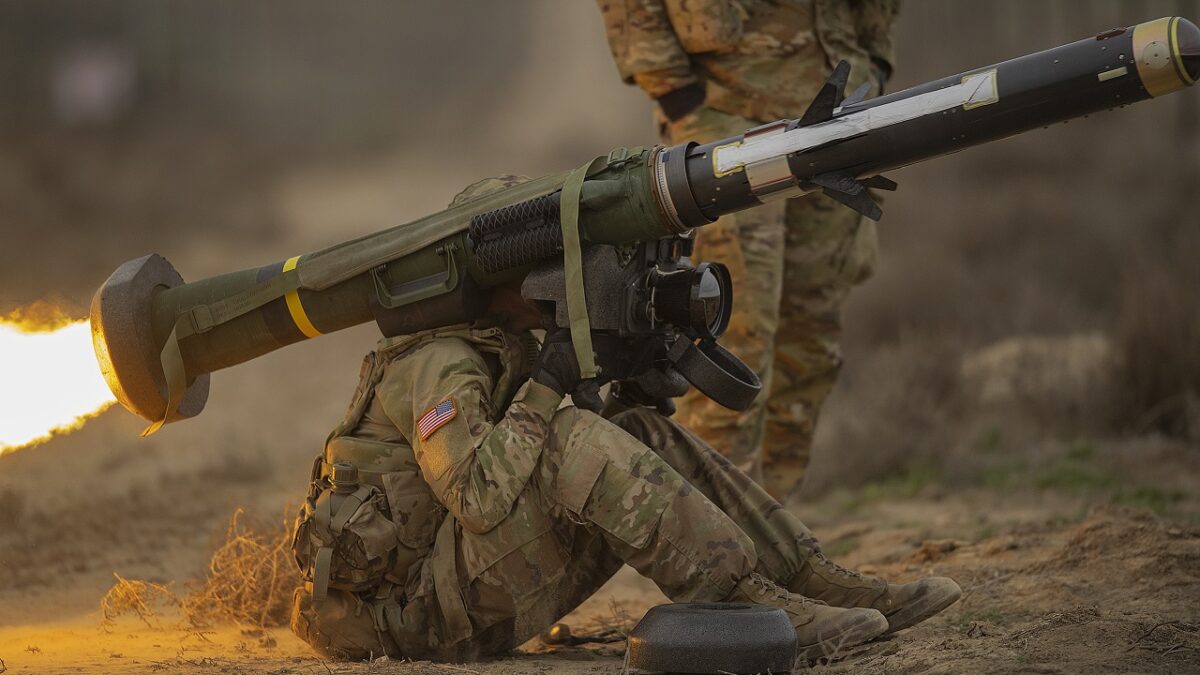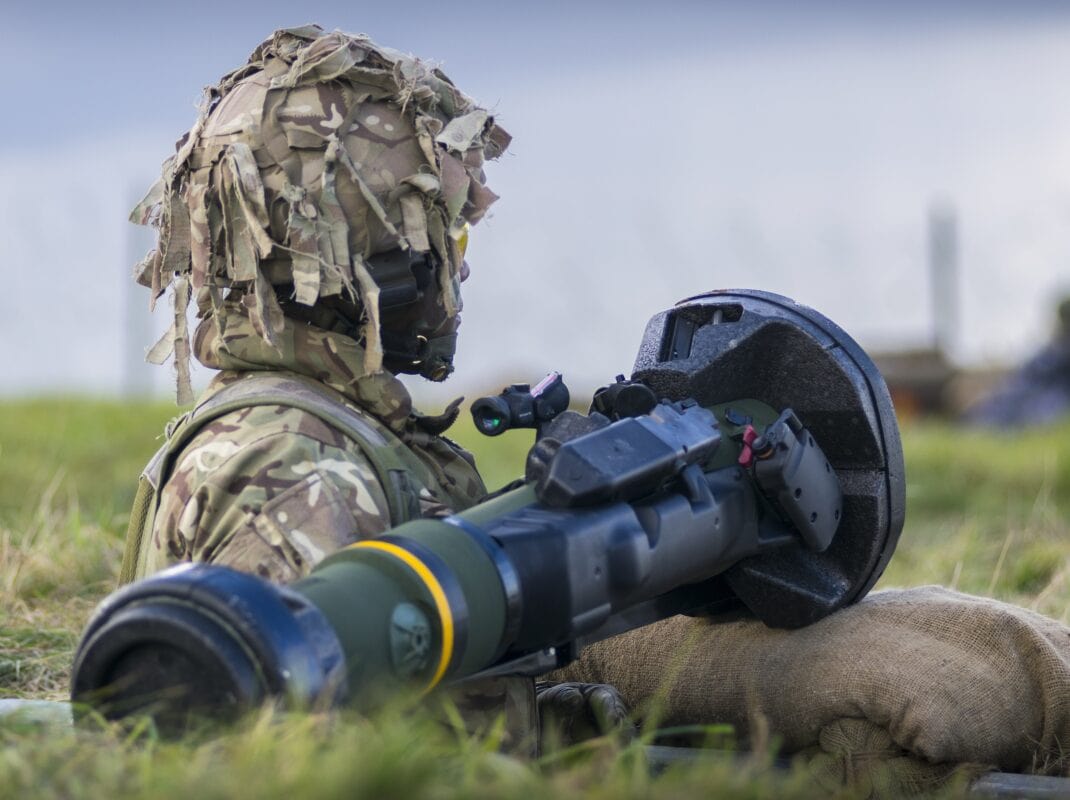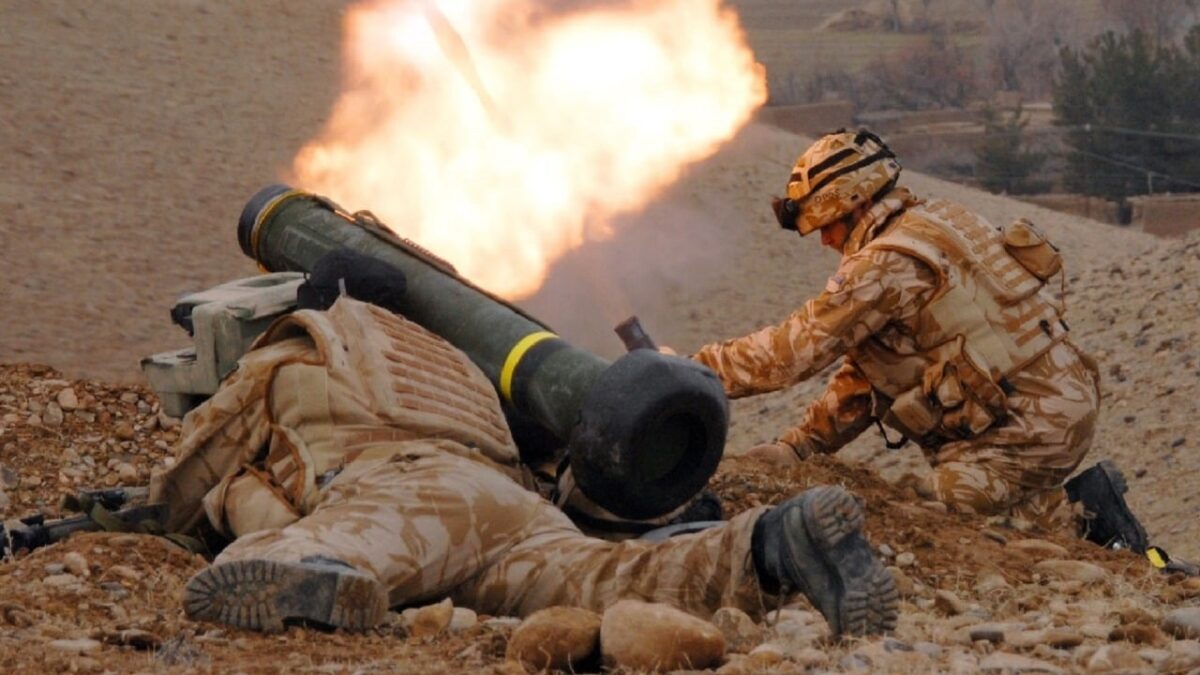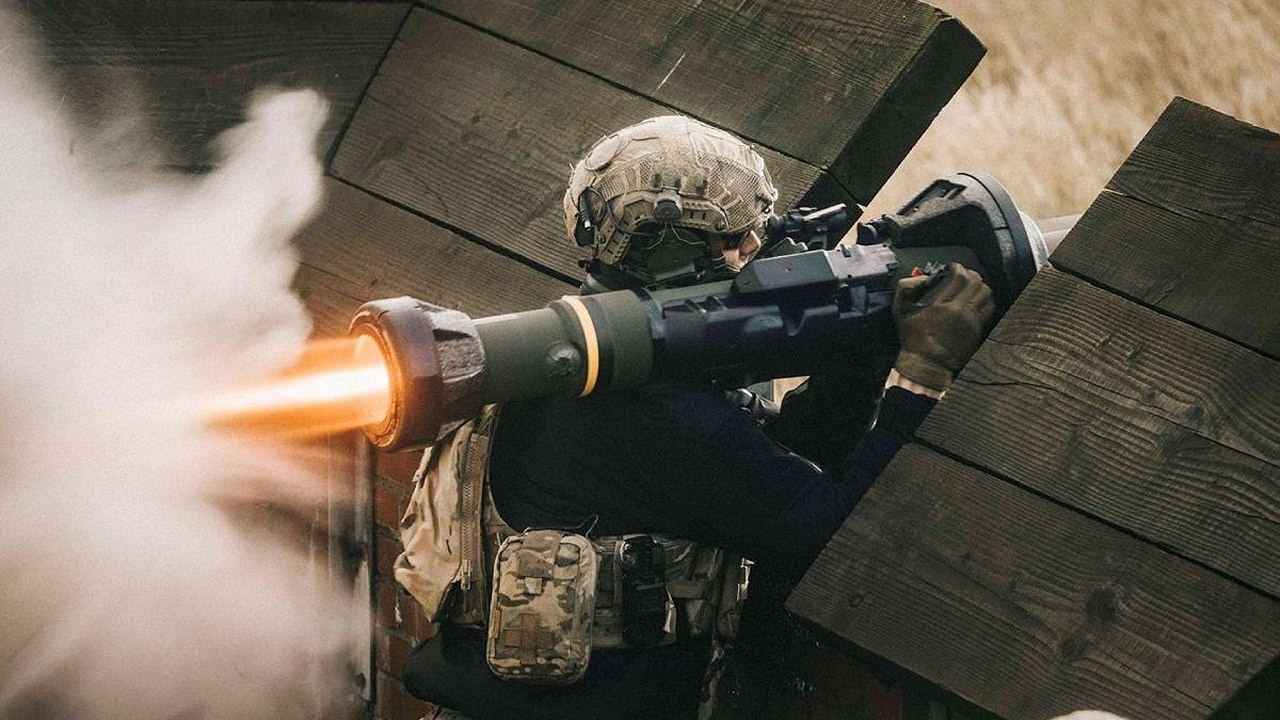I can’t recall a weapons system ever being called a “saint” before, but the Ukrainians have their religious icon, and it is called “Saint Javelin” after the anti-tank guided missile launcher. “Saint NLAW,” another tank blasting munition, is on the list at Ukrainian web site SaintJavelin.com where you can make donations and buy Javelin and NLAW merchandise such as t-shirts and hoodies. Ukrainians even name their pets Javelin. This whole craze assumes that the soldiers will have an unending supply of anti-tank missiles as manna from heaven but that may not be the case.

A soldier from the Idaho Army National Guard, Charlie Company, 2-116th Combined Arms Battalion, 116th Cavalry Brigade Combat Team makes Idaho National Guard history with the first firing of a Javelin anti-tank missile.
In a historic moment of training for the Idaho Army National Guard, soldiers from Charlie Company, 2-116th Combined Arms Battalion, 116th Cavalry Brigade Combat Team, fired the FGM – Javelin portable anti-tank missile on Sunday while conducting a series of field training exercises scheduled for the week on the Orchard Combat Training Center ranges.
Anti-tank Missiles Needed on the Offense and Defense
These weapons are precious and the United States and Britain who supply the launchers and missiles could run out of their own stocks before Ukraine can completely prosecute the war. This would set up a difficult state of affairs as the Ukrainian military conducts its counteroffensives in Kherson and Kharkiv, simultaneously in the northeast and southeast of the country.
Trench Warfare for the Javelin and NLAW
The Ukrainians have fired so many Javelins that the heavy rectangular boxes they are shipped in are piling up and being used as makeshift beds. There are trenches in combat territory where both sides are waiting to attack each other at less than 2.5 miles away, within the range of the Javelin. The NLAW (Next-Generation Light Anti-tank Weapon) has a much shorter maximum range of half a mile. Husks of burned out tanks litter these emplacements as the missiles have taken their toll on Russian armor. Some of the best tanks Moscow has thrown into the cauldron have been destroyed.
Still Successful Use
Lt. Col. Bohdan Dmytruk has led forces who have fought with anti-tank weapons since the early days of the war. Dmytruk told the Washington Post that the weapons have helped turn the tide against Russian fighters. “The Ukrainian military basically destroyed their newest tanks and infantry combat vehicles in the first wave of fighting [with Javelins],” Dmytruk said. “The last vehicle of theirs we damaged just a couple days ago was a BMP-1, which is one of their oldest models. They would’ve had that one sitting in storage for a long time, so they’re really emptying out their stocks right now.”
How Do They Work?
Ukraine has received at least 5,000 Javelins from the United States and the United Kingdom has sent more than 5,000 NLAWs. The Javelin is a “fire and forget” missile that does not require wire-guided line of sight. Users can fire a missile and duck for cover or quickly move to another launch position. It is a shoulder-fired launcher that fires a five inch round. The Ukrainians often use drones for targeting.

NLAW system provided by UK.
Like the Javelin, the NLAW can be fired directly, or it can send a missile upwards and then have it rain down on the turret – the weakest part of the tank. Weighing 27.5 pounds it is less hefty than the Javelin and it excels at urban warfare. The NLAW is easy to fire and is discarded after one use. Soldiers can shoot from buildings up high and out of sight of the tanks below. The Javelin is better in flat rural areas such as fields and meadows.
Can the Americans and British Keep Up the Supply?
Both weapons systems are expensive. The Javelin launcher is $178,000 and the NLAW is around $40,000. Lockheed Martin’s plant in Alabama can’t make them fast enough. This facility, that President Biden toured in May, will try to ramp up from making 2,100 a year to 4,000 Javelins annually, but this will take many months or even years to increase production. Another plant in Iowa makes the Javelin warhead and it is working overtime to keep up. But the Iowa facility also produces other ammunition. So, Javelin production will depend on effective supply chains. Think tank CSIS said the United States has 20,000 to 25,000 Javelins left in the stockpiles. But that was in April and those numbers have been reduced further. The Americans need to save some in case there would be a war against China, North Korea, or Iran.
“Even with the Javelin, we are probably five years away from replenishing that stock despite its manufacturing line remaining open,” Ellen Lord, former Under Secretary at the Department of Defense, said in a Congressional hearing reported by USNI.
There is also a concern as noted by the Times of London that the United Kingdom is running low on their own weapons systems after supplying so much material to Ukraine.

Javelin anti-tank missile being fired along with a mortar. Image credit: UK government.
Running Out Would Be Unthinkable
But the anti-tank weapons are so valuable to the Ukrainians, they are not likely to run out. The United States and the United Kingdom will make every effort to supply them even their own stockpiles may dwindle. One thing is for sure – the Ukrainians must make each launch count and practice “one shot one kill” gunnery to conserve ammunition. The stakes are high for the defenders to take back territory and Saint Javelin and Saint NLAW have become invaluable.
Expert Biography: Serving as 1945’s Defense and National Security Editor, Dr. Brent M. Eastwood is the author of Humans, Machines, and Data: Future Trends in Warfare. He is an Emerging Threats expert and former U.S. Army Infantry officer. You can follow him on Twitter @BMEastwood. He holds a Ph.D. in Political Science and Foreign Policy/ International Relations.

